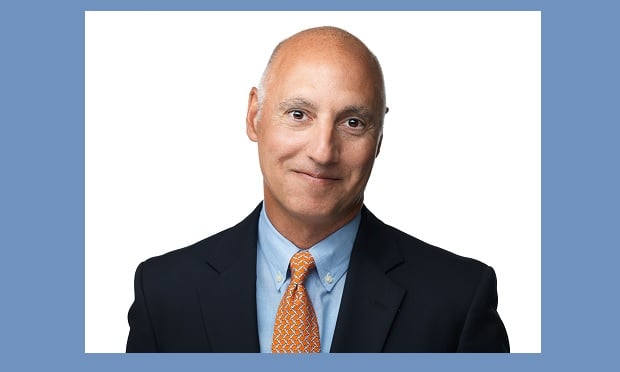While risk-retention groups (RRGs) saw premiums decline in 2010,RRG domiciles last year experienced marked overall growth—and forthe first time ever, surplus surpassed totalpremiums.
|Premiums for the RRG industry in 2010 dropped 3.5 percent to$2.48 billion. But industry assets grew by 8 percent to $7.15billion and industry surplus grew by 11.9 percent to $2.84billion.
| During the early part of the lastdecade, premiums, total assets and surplus all climbedexponentially. When the economy stalled, however, RRG premiumsbegan to falter. But both assets and surplus continued to increasesteadily, never seeing a decline.
During the early part of the lastdecade, premiums, total assets and surplus all climbedexponentially. When the economy stalled, however, RRG premiumsbegan to falter. But both assets and surplus continued to increasesteadily, never seeing a decline.
Much of the reason there was no overall decline is due to theheavyweight RRGs (the top 15 or so), most of them with 20 years ormore of doing business.
|So even though they wrote less premium, they had theinfrastructure to keep growing surplus and assets. Many of thesmaller, younger groups did see a decline in surplus/assets whenthey saw a drop in premium, but they were so small that it didn'taffect the industry totals.
|Premiums-to-surplus ratios are measures of insurer strength,with weaker, overleveraged companies reporting higher ratios. At.87, the RRG ratio is now more in line with the rest of theproperty and casualty industry, which reported a .76 ratio overallin 2010.
|By comparison, premium in 2009 was $2.6 billion; and in 2008 was$2.57 billion.
|Surplus in 2009 was $2.54 billion; and in 2008 was $2billion.
|Vermont
|Among domiciles, Vermont once again dominated the market, with31 percent of all RRGs domiciled in the state.
|Premiums for the domicile, however, fell by more than 6 percentin 2010, due in part to declines in premiums of its two largestRRGs. Vermont RRGs also saw a 10.5 percent gain in surplus, whichreached $1.6 billion; and a 9.7 percent gain in assets to $3.82billion.
|Much of the growth in assets and surplus was spurred byVermont's healthcare sector—particularly in the physicianssubsector, which grew by 18.2 percent.
|While Vermont still accounts for the lion's share of RRGs—andtherefore premiums, assets and surpluses—several other states arestarting to increase their market share.
|South Carolina
|Long the No. 2 domicile in terms of number of RRGs, SouthCarolina bucked the trend and saw an increase in premium in 2010,as well as an increase in both total assets and in surplus.
|South Carolina RRGs' premium rose by 7.6 percent to $216.7million, with much of this growth fueled by RRGs servingphysicians, with premiums jumping 12 percent for this sector.
|Assets for South Carolina RRGs grew by 9.4 percent to $640.2million and their surplus grew by 8.8 percent to $251.5million.
|Washington, D.C.
|Ranked third in overall RRG premium is Washington, D.C. with$144.3 million, a decline of 1 percent from 2009.
|In terms of total assets and surplus, D.C. showed mixed results.Total assets for RRGs in the domicile were down by 1.9 percent,while surplus saw a gain of 9.6 percent.
|Accounting for nearly half of all RRG premium in the districtare nursing-home RRGs. But the showing in 2010 wasn't enough tooffset declines experienced in other business areas.
|Hawaii
|Fourth-ranked Hawaii saw a 2.1 percent decline in premium from2009 to 2010 from $103.5 million to $101.5 million. However, thestate had a huge 20 percent jump in surplus and a 6.8 percentincrease in total assets.
|Montana
|Fifth-ranked Montana had a great year in 2010, with a 7.9percent increase in premium to $99.9 million. The state also saw astaggering 22 percent increase in surplus and a 14 percent increasein total assets.
|Nevada
|Nevada jumped from the eighth to the sixth spot of rankings bypremium, with a 6.4 percent increase to $82.1 million. The statealso saw assets increase by 4.3 percent to $179.8 million, but sawits surplus fall by 4.3 percent to $52.6 million.
Want to continue reading?
Become a Free PropertyCasualty360 Digital Reader
Your access to unlimited PropertyCasualty360 content isn’t changing.
Once you are an ALM digital member, you’ll receive:
- All PropertyCasualty360.com news coverage, best practices, and in-depth analysis.
- Educational webcasts, resources from industry leaders, and informative newsletters.
- Other award-winning websites including BenefitsPRO.com and ThinkAdvisor.com.
Already have an account? Sign In
© 2024 ALM Global, LLC, All Rights Reserved. Request academic re-use from www.copyright.com. All other uses, submit a request to [email protected]. For more information visit Asset & Logo Licensing.








